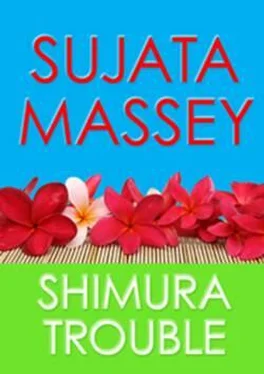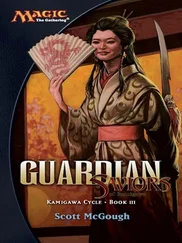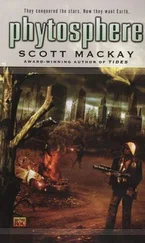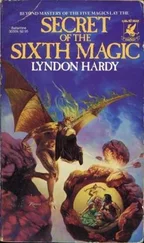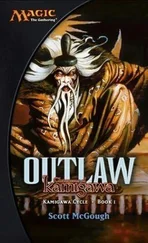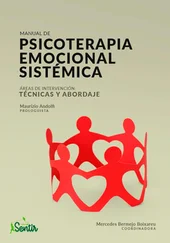Sujata Massey - Shimura Trouble
Здесь есть возможность читать онлайн «Sujata Massey - Shimura Trouble» весь текст электронной книги совершенно бесплатно (целиком полную версию без сокращений). В некоторых случаях можно слушать аудио, скачать через торрент в формате fb2 и присутствует краткое содержание. Жанр: Детектив, на английском языке. Описание произведения, (предисловие) а так же отзывы посетителей доступны на портале библиотеки ЛибКат.
- Название:Shimura Trouble
- Автор:
- Жанр:
- Год:неизвестен
- ISBN:нет данных
- Рейтинг книги:3 / 5. Голосов: 1
-
Избранное:Добавить в избранное
- Отзывы:
-
Ваша оценка:
- 60
- 1
- 2
- 3
- 4
- 5
Shimura Trouble: краткое содержание, описание и аннотация
Предлагаем к чтению аннотацию, описание, краткое содержание или предисловие (зависит от того, что написал сам автор книги «Shimura Trouble»). Если вы не нашли необходимую информацию о книге — напишите в комментариях, мы постараемся отыскать её.
Shimura Trouble — читать онлайн бесплатно полную книгу (весь текст) целиком
Ниже представлен текст книги, разбитый по страницам. Система сохранения места последней прочитанной страницы, позволяет с удобством читать онлайн бесплатно книгу «Shimura Trouble», без необходимости каждый раз заново искать на чём Вы остановились. Поставьте закладку, и сможете в любой момент перейти на страницу, на которой закончили чтение.
Интервал:
Закладка:
By the time we’d passed the exit for Pearl City, Edwin’s silver truck was three cars ahead of us, and I tried to keep it in sight, but there were plenty of distractions: vans decorated with Japanese company names, city buses, and cars towing other vehicles with only a few feet of rope connecting them. My father tutted in disapproval at the sight of young men sitting atop steel trunks in the open backs of pick-up trucks.
“Get around that truck before someone flies off and lands in front of our van,” my father advised. “Can we get into the HOV lane?”
Yes we can, I decided after reading a sign that defined a high occupancy vehicle as one containing two people. Now that was different from California-not to mention the fact that the other cars here easily made way for us to merge into the diamond-marked lane. I was almost shocked by the courtesy. Perhaps this was an example of ‘Drive with Aloha’, a message I had seen on an electronic traffic message board a few miles back.
After passing the town of Waipahu, speed picked up. Most of the cars had defected to a north-bound freeway. The traffic jam was over, and there were fewer stores and houses along the freeway, just dry brown land marked with sparse trees, rocks, and the occasional large burnt-black expanse. There must have been some brush fires here, I thought, and then yearned a bit for the lush green north-east section of Oahu where most of my botany course had taken place. Uncle Hiroshi had been kind enough to undertake the search for our housing, but obviously he didn’t know that he was booking on the non-tropical side.
H-1 West ended, and I was now driving a one-lane road called Farrington Highway. Farrington was a big name on the island, that of one of the most influential governors of Oahu, and founder of the Honolulu Star-Bulletin newspaper. My reverie was broken by a hand-lettered sign propped on the right side of the road. It read, FRESH COLD LYCHEE. Twenty feet later, a second sign entreated, YOU WANT? followed by the final enticement: SO SWEET! I slowed slightly to get a look at a man hunched in the payload of a dusty truck sorting fruit.
The next signs I saw were official ones: Kainani, 7 miles. And on the left, there was a sign for Laaloa Street, and a postage-stamp-sized neighborhood of older, unmatched houses, the antithesis of the large, sterile housing developments we’d passed between Honolulu and Waipahu. As Edwin turned off to his neighborhood he stuck a fist out the window and wagged it, his pinkie and thumb skyward.
“What does he mean?” Hiroshi wondered aloud. “Are we doing something wrong?”
“No, no, Ojisan!” I explained to him that the shaka sign was a greeting that supposedly originated with a plantation laborer who’d lost some fingers in the line of work. People waved back to him making their own hand signals two-fingered ones, as a show of respect. Now the shaka sign was the standard wave used everywhere in Hawaii.
The exit to Kainani was hard to miss: a hibiscus-edged, Japanese-style arched bridge. As I slowly took the exit, which crossed back over the highway to the ocean, the yellow-brown landscape dissolved into a Technicolor golf course. To my left was a large pond where lazy black swans pecked around the edge; to the right was a gated community of grand, 1920s-modeled villas the color of orange sherbet.
We’d all rolled down our windows long ago, a reaction to the car’s non-functioning air-conditioning, and now trade winds gently rippled through the minivan. Trade winds, one of the prettiest phrases I knew.
“This place was built by a Japanese developer,” Uncle Hiroshi said. “It’s as pretty as in the Internet photographs, I think. Is it all right for you?”
“It’s lovely,” I said. Despite my belief in supporting native plant landscaping, I was secretly relieved that we wouldn’t be staying in the middle of a brown field. “You can’t always believe what you see or read on the Internet, but this looks postcard perfect.”
“Check out the golf course,” Tom said. “Eighteen holes, and the golf club is supposed to have one of the island’s top Japanese restaurants.”
“Top Japanese restaurants are expensive,” my father said. “Rei will be happy to cook; why, she’s been cooking for me this last month and I’ve lost five pounds.”
“That’s not much of an argument for my cooking,” I said, thinking that what had seemed like an act of love, feeding my father, might feel a little different if I was doing it non-stop for three men. “I just hope the kitchen has some pots and pans.”
“The kitchen is quite luxurious, I think. Would you care to see the photographs?” Tom started rummaging in his carry-on bag.
“Not now, thanks. Security’s ready to talk to us,” I said, because the cars ahead of us had all been cleared and now it was my turn to introduce myself at Kainani’s gatehouse.
After I’d given our name and the street address of the house we were renting, a handsome young man in a green-and-gold aloha shirt and trim khaki shorts handed me directions and an envelope with keys to our house on Plumeria Place. Plumeria was the name of the particular flower in the parking attendant’s hair, I remembered. Hawaii was coming back to me, fast.
I drove a half-mile farther, passing the Kainani Inn, a sprawling modern hotel on the beach side of the road. On the left was the fabled golf course, where a cluster of golfers had gathered to watch someone swing.
“Michelle Wie!” Uncle Hiroshi started thumping on his window, as if the star teenage golfer might wave. She didn’t notice, so I was forced to stop the car in order that Tom and Uncle Hiroshi could run to the golf course with a digital camera.
After ten minutes Hiroshi and Tom returned to the minivan, full of bubbly excitement over the young star. Finally we turned left at the small road cutting through the golf course that led to an elaborate iron gate with fancy pineapple designs and the name of the housing area, Pineapple Plantation. As the Aloha team member who’d given me the key had instructed, I waved the house key over a sensor and the gates parted to reveal a neighborhood of simple gray clapboard houses, each with a wraparound white wooden porch called a lanai. Another gorgeous word that had returned to my memory. Despite my intentions, I was really getting excited about being in Hawaii.
“Well done, Rei-chan!” Tom said, practically jumping out of the car when I’d pulled into the driveway. I slowly got out of the car, still studying the house. It was clearly part of a mass development, but its simple, well-balanced design was architecturally pleasing, albeit American. The only factor that made these homes feel Polynesian was the landscaping: vigorous shrubs like ginger, breadfruit trees, and several species of palm. Thick banks of orange-spotted lauae ferns lined the walkway to the house, not quite covering the sprinkler heads set into the ground. I smelled plumeria everywhere, its dainty white blooms on small trees that looked as if they’d been planted only recently.
Inside, the house plan was modern. The heart of the home was a high-ceilinged kitchen with granite counters and stainless appliances including a professional-looking juicer. As my father exclaimed over it, I looked past the pot rack hanging with anodized aluminum pans and across the neutrally furnished living room to huge windows showing views of the beautiful green lawns. So this is what you could get on the Leeward Side of Oahu for four thousand dollars a month-not bad, if you compared it to the cost of a Waikiki double.
Two bedrooms and baths were upstairs, one of which would be for Hiroshi and my father, and the other for Tom. I would sleep downstairs in my own bedroom, which was delightful because the room had its own lanai. Instead of using the downstairs air-conditioner, I could turn on the fan over my bed and open the sliding lanai door to the trade winds.
Читать дальшеИнтервал:
Закладка:
Похожие книги на «Shimura Trouble»
Представляем Вашему вниманию похожие книги на «Shimura Trouble» списком для выбора. Мы отобрали схожую по названию и смыслу литературу в надежде предоставить читателям больше вариантов отыскать новые, интересные, ещё непрочитанные произведения.
Обсуждение, отзывы о книге «Shimura Trouble» и просто собственные мнения читателей. Оставьте ваши комментарии, напишите, что Вы думаете о произведении, его смысле или главных героях. Укажите что конкретно понравилось, а что нет, и почему Вы так считаете.
